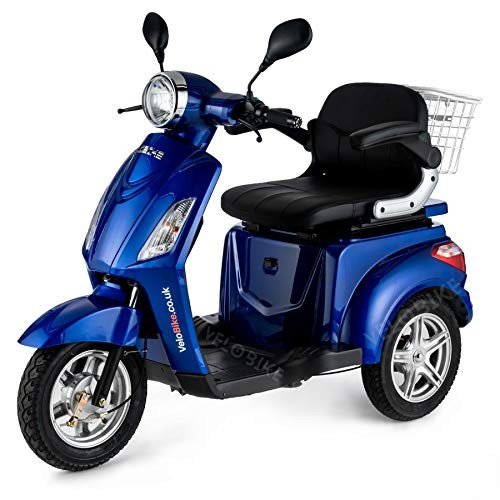It's Time To Extend Your Mobility Scooter Options
Mobility Scooters: A Comprehensive Guide
Mobility scooters have become a vital mode of transportation for lots of people dealing with mobility challenges. This article checks out the different facets of mobility scooters, including their types, advantages, functions, and a guide for prospective purchasers.
Understanding Mobility Scooters
Mobility scooters are electrically powered devices created for individuals with restricted mobility. They supply a way of transport for people who might have problem walking however still wish to retain their self-reliance. They are available in various styles and features to accommodate a large range of needs.
Types of Mobility Scooters
Mobility scooters can normally be classified into 3 main types:
Type
Description
Best For
Compact Scooters
These are small and lightweight, perfect for indoors and short trips.
Users with limited storage space or those who take a trip typically.
Mid-size Scooters
A balance in between portability and stability, appropriate for both indoor and outside use.
Those who require to cover a variety of terrains.
Heavy-duty Scooters
Big and robust, developed for rugged outdoor usage and heavier individuals.
Users needing extra weight capacity or going off-road.
Key Features of Mobility Scooters
The option of mobility scooter typically depends upon the features that line up with individual needs. Here are a few of the key functions to think about:
Weight Capacity: Mobility scooters come with various weight limitations. Going In this article is essential to pick a scooter that can adequately support the user's weight.
Variety: The distance a scooter can travel on a single charge differs. Depending on user needs, one may choose for scooters with a variety of approximately 40 miles.
Speed: Most mobility scooters can reach speeds between 4 to 8 mph. Consider what speed is comfortable and safe for the intended environment.
Turning Radius: A compact turning radius is necessary for indoor use, enabling easier navigation in tight spaces.
Battery Type: The kind of batteries utilized can impact the scooter's efficiency. Lead-acid and lithium-ion batteries are the most typical.
Advantages of Using Mobility Scooters
The advantages of mobility scooters extend beyond just transport. Some crucial benefits consist of:
Independence: Users can navigate their environment without counting on caretakers, promoting independence and self-confidence.
Health Benefits: Using a scooter can motivate outdoor activity, leading to physical and psychological health enhancements by minimizing sensations of isolation.
Convenience: Scooters can easily be operated in different environments, whether indoors, in shopping malls, or outdoors.
Important Considerations When Buying a Mobility Scooter
When purchasing a mobility scooter, a number of considerations can assist make sure that you pick the best model:
Assess Individual Needs:
- Mobility level: Consider just how much help the individual will need.
- Series of use: Determine where the scooter will primarily be used (inside your home, outdoors, on rough surfaces, etc).
Test Drive:
- Always test drive a number of designs to discover a suitable fit. Take note of comfort, ease of steering, and the scooter's responsiveness.
Review Safety Features:
- Look for scooters with sufficient safety functions like lights, signs, and anti-tip designs.
Check Warranty and Service Options:
- A trustworthy service warranty and readily available service options are important for long-lasting usage.
Frequently Asked Questions about Mobility Scooters
**1. How fast do mobility scooters go?Mobility scooters usually have speeds ranging from 4 to 8 miles per hour, with the majority of designed for safety instead of high-speed travel. 2. Are there weight constraints on mobility scooters?Yes, mobility
scooters come with particular weight limitations, often ranging from
250 pounds to over 500 lbs, depending on the design. 3. Can mobility scooters be used indoors?Certain designs, particularly compact scooters, are particularly created for
**indoor usage and are easier to steer in tight spaces. 4. How frequently do the batteries need to be replaced?Battery life can vary based on use, but generally, with correct care, batteries might last between 1 to 3 years before requiring replacement
**. 5. Are mobility scooters covered by insurance?Coverage can differ, but some insurance plans, including Medicare and Medicaid, might cover part of the cost. It's recommended to talk to specific insurance coverage suppliers. Mobility scooters work as a
important tool for numerous individuals, allowing them to maintain
their liberty and self-reliance. By comprehending the different types and functions of mobility scooters, people can make informed decisions tailored to their particular requirements.
Whether utilized for errands, socializing, or leisurely activities, mobility scooters can boost the quality of life for those with mobility limitations. Buying a mobility scooter is a choice that can considerably impact an individual's daily life. For that reason, people need to thoroughly evaluate their alternatives and select a design that best aligns with their way of life and mobility requirements
.  ******
******